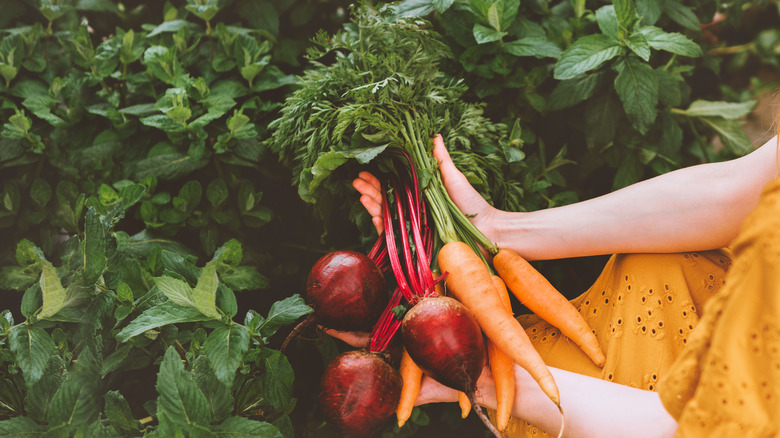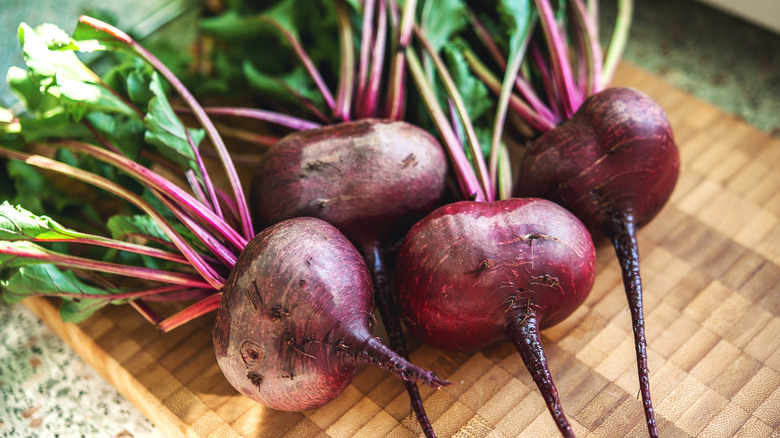Why You Should Remove The Greens On Root Vegetables Right Away
Ah, root vegetables. We love these sometimes undersung stars of the kitchen. After all, where would our cooking be without the sweetness of carrots, the earthiness of beets, or the pepperiness of radishes? We could wax poetic all day about the root vegetables we love, except we're not actually here to talk about root vegetables — we're here to talk about their leafy green tops.
When we visit the grocery store or the local farmers market, we always look for root vegetables that still have their greens attached. Buying root veggies this way is like a two-for-one deal — not only can we cook up those carrots or beets, but we can also prepare their greens. But here's the thing, just like root vegetables often require different cooking approaches than their greens, the two elements require different storage, as well. Rather than just tossing a whole beet with greens into the fridge, it's important to cut off the greens and store them separately.
Those greens deteriorate much faster than the vegetables
So why snip off those beet, carrot, or radish greens as soon as you get your veggie haul home? The answer is simple, the greens simply go bad a lot quicker than the root vegetables themselves. Root vegetables, after all, have an extremely long shelf life, staying fresh and tasty for months if stored under the right conditions. But greens are more delicate, and just don't last as long, even in the fridge. So if you've gone to the trouble to locate those greens, you want to make sure to cook them before they go bad.
If you have the time right when you get home from the store, you might as well cook up the greens. However, you can always cut off the root vegetable greens, wrap them in a damp paper towel, and store them in the fridge in an airtight container or zip-top bag. This technique will buy you a little more time to transform your greens into carrot-top pesto, beet green pasta, or simple sautéed radish greens.

